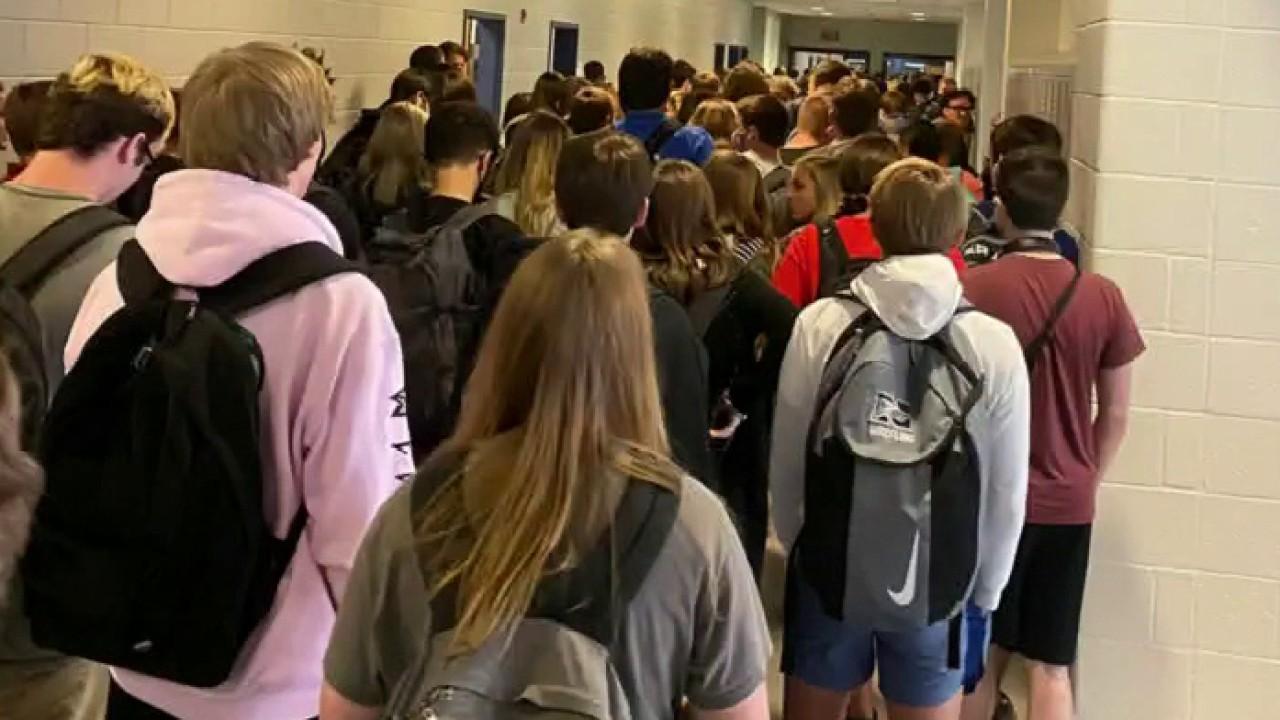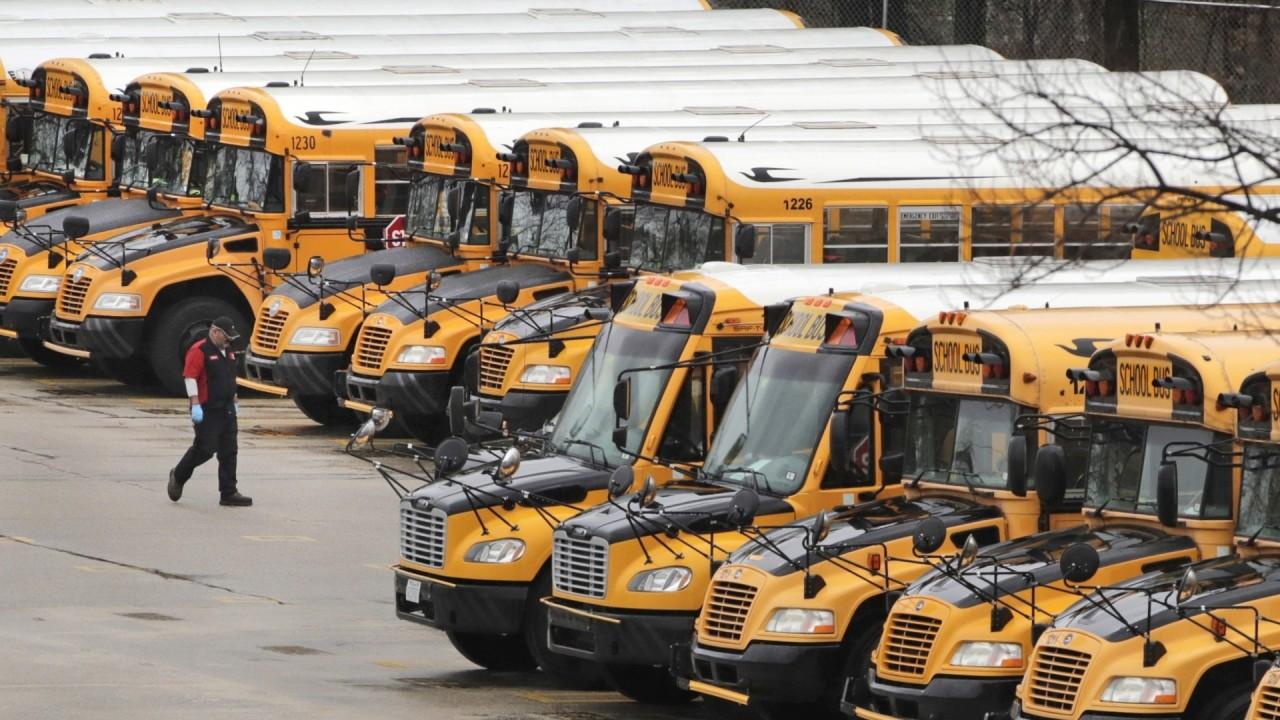Reopening school during coronavirus means sneeze guards on desks and digital thermometers at the door
In Quincy, Ill., an elementary school redesigns for the pandemic; ‘Things are moving so fast, I’d say its 50-50 if we even open in two weeks’
QUINCY, Ill.—The new Denman Elementary school opened up last year with state-of-the-art security that aimed to prevent mass shootings and broad communal spaces to encourage close collaboration.
Now school administrators fear the coronavirus has rendered much of that design obsolete.
GET FOX BUSINESS ON THE GO BY CLICKING HERE
As tens of millions of students across the country return to schools this month for the first time since March, teachers and principals are scrambling to jury-rig their classrooms, hallways and schedules to keep students physically distanced inside of buildings created to bring them together.
Secure entryways installed at Denman Elementary before the pandemic were meant to keep students safe from intruders outside the school. Now they are being retrofitted with digital thermometers to protect them from a virus some students may be carrying inside their own bodies.
Last Friday, teachers and workmen were giving the school an overhaul. They turned the Denman cafeteria into a workshop where they assembled 200 clear plastic sneeze guards made of white PVC pipe and clear shower curtains. They will be placed on desks to prevent students from breathing on one another.
Down the hall, teachers were applying stickers on their classroom floors to mark where it will be safe to sit. Principal Chrissy Cox was figuring where to section off spaces outdoors for classes and recess.
When students return to Denman next week, there will be two nurses and two offices, one for students with coronavirus symptoms and one for everyone else. Each person who enters the building will have to place the inside of their wrist next to a digital thermometer. If their temperature is higher than 100.0 degrees they will be taken to the “sick office” and have their temperature taken again. If it remains above 100 they will be sent home.
In the classrooms, desks will be as far apart as space allows and lined in rows instead of facing each other. It won’t be as easy to collaborate but there will be less breathing on one another and touching, said Courtney Erfft, a fourth-grade teacher who had been rearranging desks all week.
Instead of having the entire class sprawl on pillows on the floor at the front of the classroom for some lessons—as they did in previous years—they will be broken up into small groups and asked to sit cross-legged on color-coded stars affixed to the floor several feet apart.
On one shelf is a small plastic bin labeled “Book Quarantine.” All books from the classroom library will be returned there to remain untouched for at least three days. That period is designed to give any coronavirus on the books time to die so they will be safe for the next student to handle. Ms. Erfft also had to figure out how to restrict the use of an electric pencil sharpener, which could be a germ magnet if all the students are allowed to use it.
“There’s not one single thing we can do, but there are a lot of small things that can help,” she said.
Quincy public school students have a choice of either coming back to the school building to take classes in person or taking them online. As of Wednesday, 81% of students at Denman will be returning to class in person, said Ms. Cox.
Roy Webb, the school superintendent, isn’t confident classrooms will stay open long. The number of cases in the area was very low through the spring and most of the summer, but there has been an increase in recent days and, he says, many in the area aren’t willing to wear face masks.
Quincy is located in Adams County, population 65,435, where there have been 566 confirmed coronavirus cases and seven deaths, according to data from the Adams County health Department.
“Things are moving so fast, I’d say its 50-50 if we even open in two weeks,” Mr. Webb said.
CLICK HERE TO READ MORE ON FOX BUSINESS
At the high school, students will alternate between staying home and attending classes in person. This hybrid model will cut the number of students in the building to 1,000 from 2,000 so there will be more room in each classroom and the hallways.
At Denman, students will alternate between eating lunch in the school cafeteria and in their classroom. Fewer trips outside the classroom mean less contact in the halls where students will be instructed to walk single file. At the end of the day, students will leave the school in a staggered order with children who walk home or get picked up leaving before the students who take the bus.
There is even a bathroom schedule with specific grades designated for certain periods. Ms. Erfft is dubious she will be able to maintain bathroom-break decorum but was confident she would be able to enforce mask and social-distancing rules. Her plan is to be very consistent and persistent.
“I will repeat my expectations—masks on, hands to yourself—and I will do it over and over and again,” she said. “You have to be patient to be an elementary school teacher. If you’re not patient this may not be the job for you.”
Write to Douglas Belkin at doug.belkin@wsj.com



